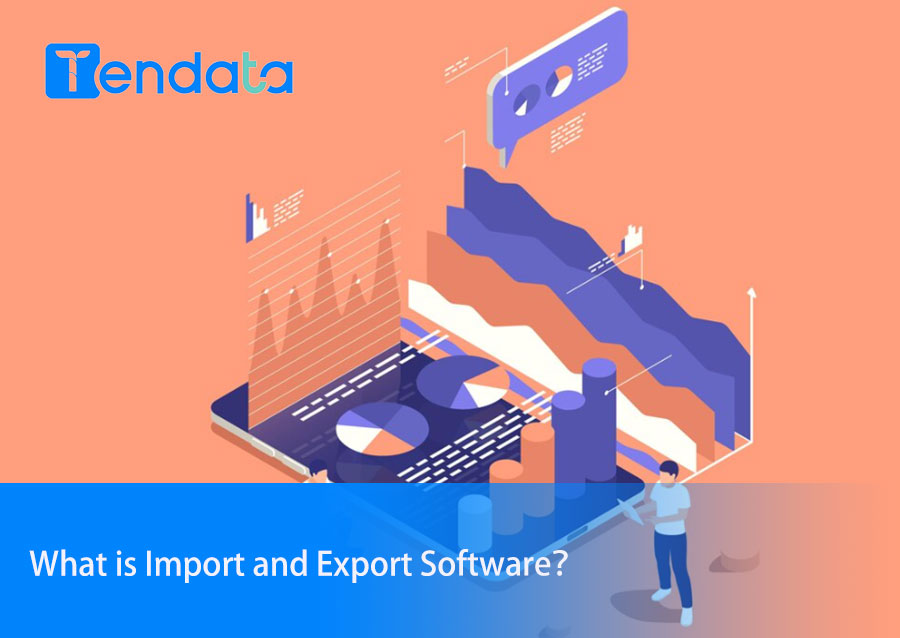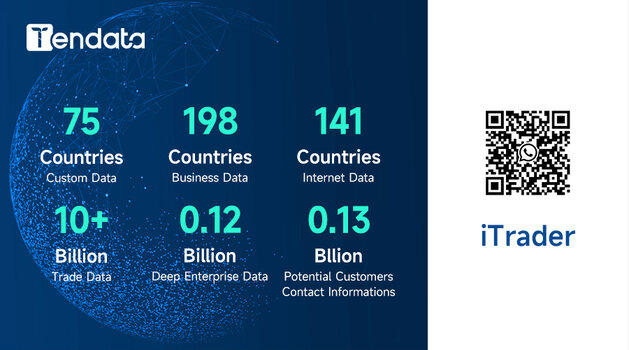 Trade Data Provider
Trade Data Provider
 2023-11-06
2023-11-06
Global trade has undergone significant transformation over the years. As
businesses expand their reach across borders, they encounter various challenges,
including customs regulations, documentation, compliance, and supply chain
complexities. In the fast-paced world of international trade, the efficient
management of import and export operations is essential for businesses to remain
competitive. Import and export software has emerged as a valuable tool for
simplifying and optimizing these processes. In this comprehensive article, we
will explore the concept of import and export software, its significance, and
how it can revolutionize global trade operations.

The Role of Import and Export Software:
Import and export software, also known as international trade management software, is designed to streamline and facilitate the management of international trade operations. It plays a pivotal role in simplifying various aspects of import and export processes.
1. Supply Chain Optimization:
Supply chain management is at the heart of import and export operations. Import and export software can enhance visibility into the supply chain, allowing businesses to track the movement of goods, manage inventory, and make data-driven decisions for efficient logistics.
2. Trade Finance and Payment Facilitation:
Import and export software often includes features related to trade finance and payment facilitation. It can help businesses navigate the complexities of international payment methods, letters of credit, and currency exchange.
3. Risk Management and Forecasting:
Mitigating risks in international trade is crucial. Import and export software provides tools for risk assessment and forecasting, enabling businesses to proactively address potential challenges.
4. Integration with Other Systems:
Import and export software can be seamlessly integrated with other business systems, such as Enterprise Resource Planning (ERP) and Customer Relationship Management (CRM) software. This integration enhances data accuracy and streamlines operations.
Selecting the Right Import and Export Software, with a Focus on Tendata:
When it comes to selecting the right import and export software, businesses need to consider a variety of factors to ensure that the software aligns with their specific needs and objectives. One such software that stands out in this domain is Tendata, which offers a comprehensive suite of features designed to facilitate seamless and efficient international trade operations. Let's delve into why Tendata is a valuable choice for businesses looking to optimize their import and export processes.
1. Supply Chain Optimization:
Tendata excels in providing businesses with a bird's-eye view of their supply chain. It offers in-depth insights into the supply chain activities of both your partners and competitors, helping you make data-driven decisions to optimize your own supply chain. With Tendata, you can track the movement of goods, monitor inventory levels, and ensure timely deliveries. This level of supply chain visibility is invaluable in ensuring that your products reach their destination efficiently and in compliance with international trade regulations.
2. Currency Conversion and Payment Facilitation:
International trade often involves transactions in multiple currencies, and managing foreign exchange can be complex. Tendata simplifies this process by offering currency conversion services, ensuring that you can make and receive payments in the currency that suits your business needs. This feature streamlines payment processes and mitigates the risks associated with currency fluctuations, making it a valuable tool for businesses engaged in cross-border trade.
3. Risk Management through In-Depth Investigations:
One of the standout features of Tendata is its ability to conduct thorough and comprehensive investigations into your potential business partners. This deep dive into a partner's background, reputation, and financial stability can be a game-changer when it comes to risk management. By identifying potential red flags early in the partnership process, you can make informed decisions, reducing the chances of encountering issues down the road. Whether you are conducting due diligence on suppliers, customers, or any other trade partners, Tendata's investigative capabilities are a vital asset.
4. Seamless Database Integration with CRM:
Tendata is not just an isolated tool; it's designed for seamless integration with other critical business systems, including Customer Relationship Management (CRM) software. This integration ensures that your import and export operations are well-connected to the broader aspects of your business. By linking your trade data with your CRM system, you can effectively manage and streamline your interactions with both suppliers and customers. This end-to-end visibility enables you to provide better service, anticipate customer needs, and manage your supplier relationships more efficiently.
Conclusion:
Import and export software has become a cornerstone in the world of global trade. Its ability to streamline trade compliance, enhance documentation management, optimize supply chains, and facilitate risk management positions it as a game-changer for businesses engaged in international trade. As the world of international trade continues to evolve, businesses that harness the power of import and export software will gain a competitive edge, ensuring their operations are efficient, compliant, and well-prepared for the challenges and opportunities of a global marketplace.
Customer development is always a primary focus for us in international trade. Having customers leads to orders. But if we're looking to start a business or expand our development channels, what are the available avenues for customer development? And what are the characteristics of these customer development channels?
The traditional undifferentiated marketing approach mostly involves extensive investment to achieve broad coverage. In the Marketing 1.0 era (Industrial Age) and the Marketing 2.0 era (Internet Age), the marketing demand of companies is to precisely locate their target customers within a massive audience (or potential audience). They also need to understand the procurement-supply relationships, price ranges, purchasing frequency, and style preferences of these target customers. This is akin to finding a needle in a haystack.

Tendata can assist foreign trade enterprises in better customer development. Once a company has precisely targeted a market (or region) using Tendata's data, the next step is to further pinpoint high-quality customers within that market, creating customer "profiles" and filtering out target customers that match one's own supply capabilities. (>>>Click to Develop New Customers)
Category
Leave Message for Demo Request or Questions


 T-info
T-info T-discovery
T-discovery

 My
Tendata
My
Tendata Market Analysis
Market Analysis Customer
Development
Customer
Development Competitor
Monitoring
Competitor
Monitoring Customer Relationship
Customer Relationship





































































































































